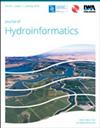利用模拟-优化混合方法对地下水和地表水资源进行联合管理
IF 2.2
3区 工程技术
Q3 COMPUTER SCIENCE, INTERDISCIPLINARY APPLICATIONS
引用次数: 0
摘要
本研究旨在确定哈利勒河流域地下水和地表水资源的最佳联合利用方式,该流域是伊朗克尔曼省最重要的研究区域之一。为此使用了多逆优化器(MVO)和 ANFIS(自适应神经模糊推理系统)仿真模型,即 MVO-ANFIS 仿真优化模型。此外,还提出了所研究流域的最优开发政策。ANFIS 模型在 Baft、Rabor 和 Jiroft 的判定系数大于 0.99。因此,采用 ANFIS 模型作为预测这些地区含水层地下水位的模拟模型。在地下水和地表水资源的联合利用方面,MVO-ANFIS 仿真优化模型得出的开发政策具有理想的性能,分别满足了 Baft、Rabor 和 Jiroft 总需求的 91.70%、87.75% 和 97.58%。此外,上述地区的水系统性能指标结果,包括可靠性(82.96、72.65、95.07)、恢复性(70、53.47、80)、脆弱性(29.54、25.64、17.02)和可持续性(74.24%、66.10%、85.78%),分别显示了所提出的模型在模拟优化问题上的适当性能。本文章由计算机程序翻译,如有差异,请以英文原文为准。
Conjunctive management of groundwater and surface water resources using a hybrid simulation–optimization method
This study aimed to determine the optimal conjunctive utilization of groundwater and surface water resources in the Halil River basin, one of the most significant study regions in Kerman Province (Iran). Multi-verse optimizer (MVO) and the ANFIS (adaptive neuro-fuzzy inference systems) simulation model, known as the MVO–ANFIS simulation–optimization model, were used for this purpose. Moreover, the optimal exploitation policy for the studied basin was presented. The ANFIS model yielded a coefficient of determination greater than 0.99 in Baft, Rabor, and Jiroft.This model had a high capability to simulate groundwater levels in these three regions. Therefore, the ANFIS model was adopted as the simulation model to predict the aquifer water table in these regions. Regarding the conjunctive utilization of groundwater and surface water resources, the exploitation policy resulting from the MVO–ANFIS simulation–optimization model had a desirable performance by supplying 91.70, 87.75, and 97.58% of the total demands of Baft, Rabor, and Jiroft, respectively. Moreover, results of water system performance indicators, including reliability (82.96, 72.65, 95.07), resiliency (70, 53.47, 80), vulnerability (29.54, 25.64, 17.02), and sustainability (74.24%, 66.10%, 85.78%) in the mentioned regions, respectively, showed the appropriate performance of the proposed model for the simulation–optimization problem.
求助全文
通过发布文献求助,成功后即可免费获取论文全文。
去求助
来源期刊

Journal of Hydroinformatics
工程技术-工程:土木
CiteScore
4.80
自引率
3.70%
发文量
59
审稿时长
3 months
期刊介绍:
Journal of Hydroinformatics is a peer-reviewed journal devoted to the application of information technology in the widest sense to problems of the aquatic environment. It promotes Hydroinformatics as a cross-disciplinary field of study, combining technological, human-sociological and more general environmental interests, including an ethical perspective.
 求助内容:
求助内容: 应助结果提醒方式:
应助结果提醒方式:


